Nakajima
Ki-84-Ia
'Frank'

The Nakajima
Ki-84 was another in the line of very successful fighters including the
Ki-27 Nate, the Ki-43 Oscar and the Ki-44 Tojo that were produced by
Nakajima for the Japanese Army Air Force. The Ki84 had excellent speed,
maneuverability, firepower and defensive armor and from its operational
debut over China in August 1944, the fighter proved itself the most
troublesome J.A.A.F. type insofar as the Allies were concerned. The
Ki-84 possessed none of the shortcomings of the earlier generation of
Japanese fighters. Extremely sturdy and possessing adequate firepower
and protection for both pilot and fuel tanks, it compared favorably
with the best of its antagonists, out climbing and out maneuvering both
the P-51H Mustang and the P-47N Thunderbolt, the ultimate developments
of these excellent American fighters. It was also adaptable, serving in
the role of high, medium and low level interception, close support and
dive bombing roles. Production of the Ki-84 began in August 1943. The
first production model being the Ki-84-Ia with the Ha.45/11 engine and
an armament of two fuselage mounted 12.5-mm guns and two 20-mm cannons
in the wings. This version made its operational debut against the
U.S.A.A.F. in August 1944 with the 22nd Fighter Sentai based at Hankow,
China. The introduction of the Ki-84 to this theater soon proved costly
to the U.S. 13th Air Force. The Ki-84 proved simple to fly and pilots
with a minimum of training could be assigned to the type, the majority
of the new pilots converting to the new fighter with only two hundred
flying hours, a level considered sub standard by the Allies but
tolerated by the J.A.A.F. in order to maintain an adequate supply of
pilots. As the war progressed, loosening of production standards due to
the bombing campaign by the U.S.A.A.F. resulted in variations in the
performance from one fighter to another and some issues with the Ha.45
engines resulted high maintenance issues in the field. During the final
phases of the war it was numerically the most important Japanese
fighter and certainly the most potent available in quantity and most
likely the best Japanese fighter aircraft of the war and the third most
produced fighter after the Zero and the Hayabusa with a total of
approximately 3,500 aircraft produced.
The
Kit
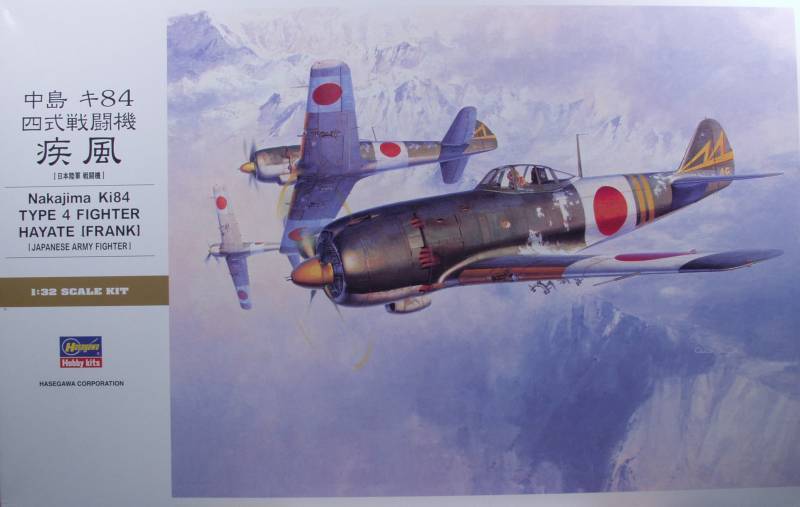
The Hasegawa kit comes in a
large top open box befitting the scale with their usual lovely artwork.
Inside the box are two large bags each with a several sprues of light
gray plastic and one small bag with clear parts and the decals are also
sealed in their own bag. The parts are cleanly and sharply molded with
only the slightest hint of flash here and there. The surface detail
consists of recessed panel lines, rivets and fastener detail as well as
raised details where appropriate. The control surfaces are all fixed in
the neutral position except the rudder and the flaps are separate and
can be installed in the down position. The fabric control surfaces
appear a bit too heavy for my taste but not much different that many
others these days. I did not find any surface defects on any of the
air frame parts and there is only a very small amount of mold alignment
seams to deal with on double sided parts. Ejector pin marks are mostly
where they won't be seen but there are some on the inside of the main
gear doors.
There
are separate panels on each side of the fuselage but
it appears it was done that way to allow proper depth of the holes
molded into the panel as there is no detail behind them. The landing
gear bays are deep and contain a lot of detail. The cockpit is very
well detailed and most will not think it requires any after market. The
instrument panel has a lot of really great detail and the decal sheet
offers both a complete overlay and a sheet with just the instrument
faces. The engine is molded with front and rear cylinders but these are
hollow on the back but that can't be seen anyway. The kit incorporates
a double wing spar which should make for a great fit of the wing to the
fuselage and guarantee the correct dihedral is achieved. The kit
includes a drop tank. The propeller has separate blades but they are
keyed to provide the correct angle. A pilot figure is included, it
requires assembly and actually looks pretty good. The landing gear
wheels are not weighted. See photos below.
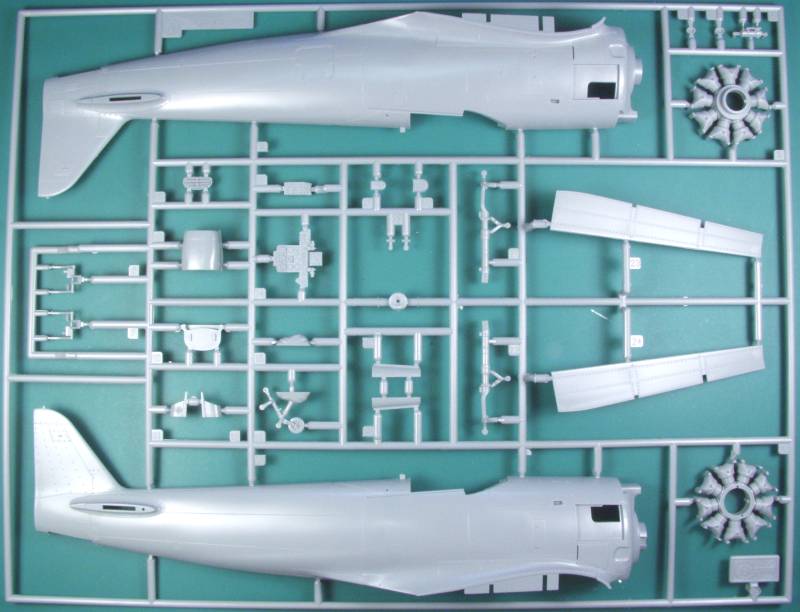
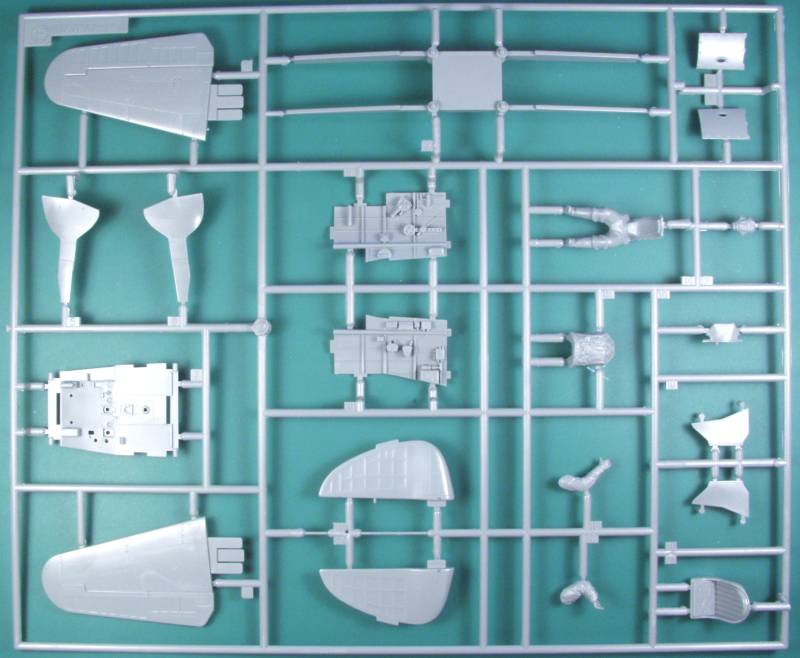
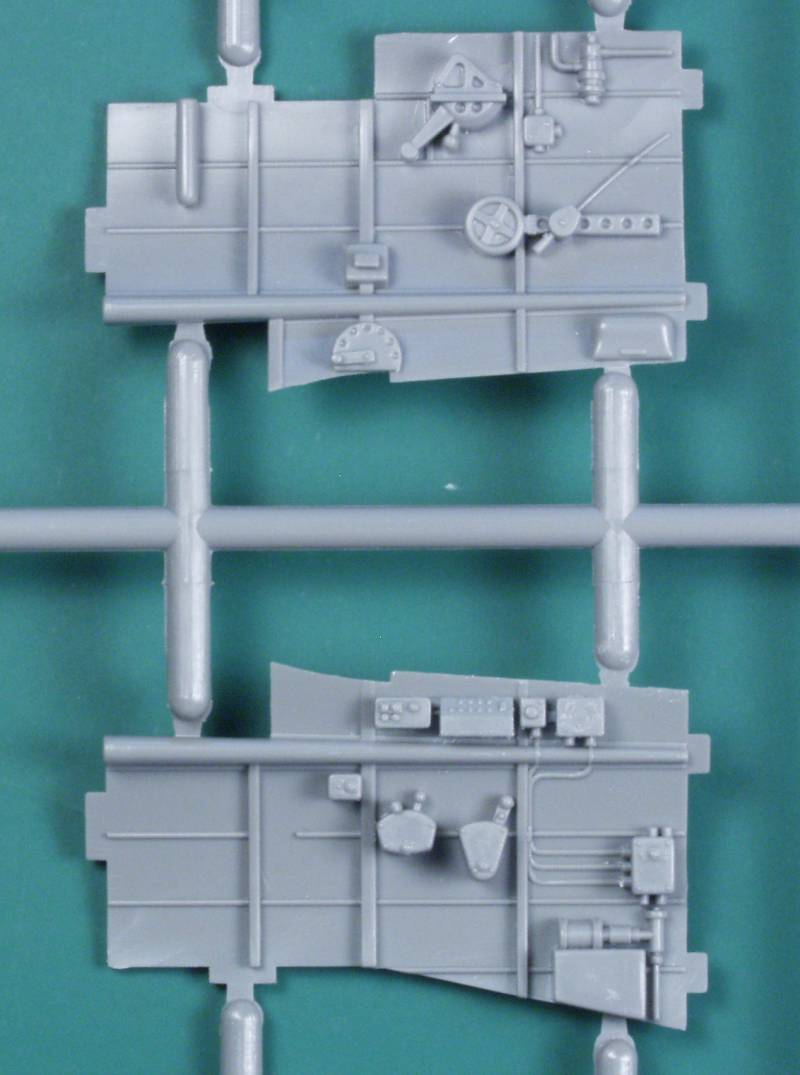
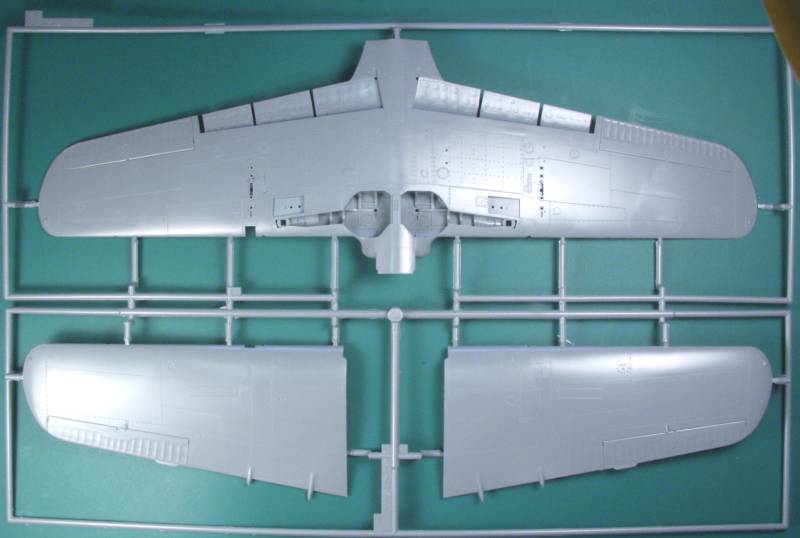
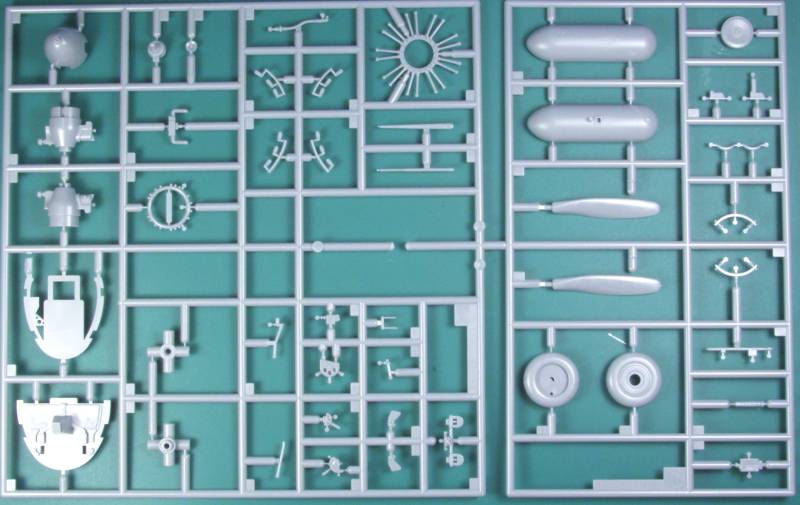
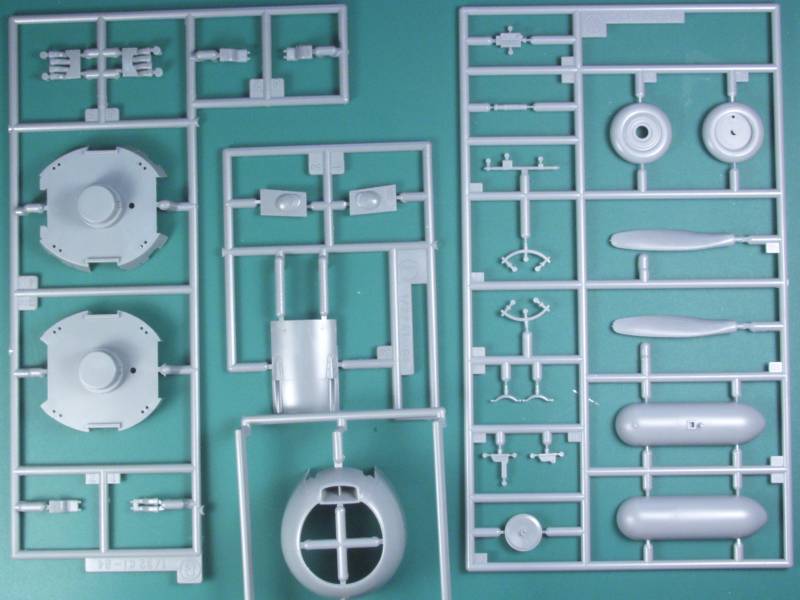
The
clear
parts are thin and clear with minimal distortion, the clear
parts
include lenses for the navigation lights, landing light and the
gun
sight and reflector. See below.
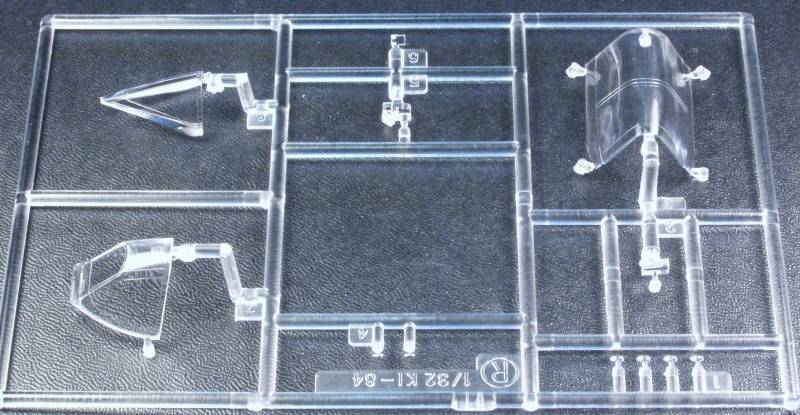
The
decals
come as two large sheets, one which has only white decals. These
are for the wing 'band aids' and are put under some of the other
markings to create a white outline or background as well as some
of the
tail numbers. The second sheet has all of the color decals. The
decals
are clearly printed but have more clear film surrounds than I
like to
see. The set also includes instrument panel decals, wing walk
markings
and stencils, fuel and oil filler hatch markings and other
detail.
Hasegawa decals tend to be thick and getting some of these to
settle
over details could be an issue especially where they need to be
stacked. At least the white is really white and not the cream
color
Hasegawa used for years. the sheets provide markings for three
aircraft. See below.
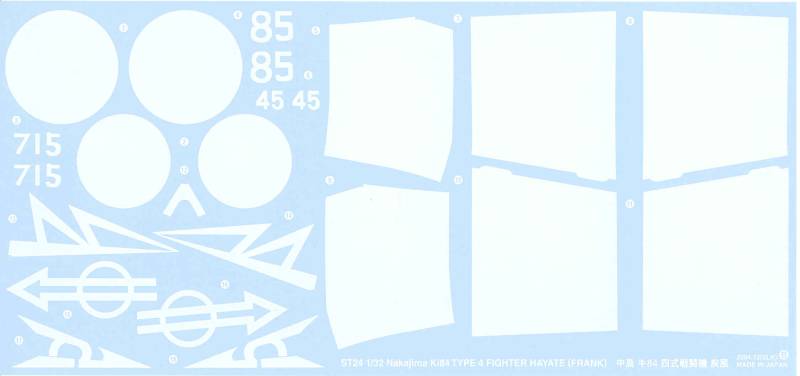
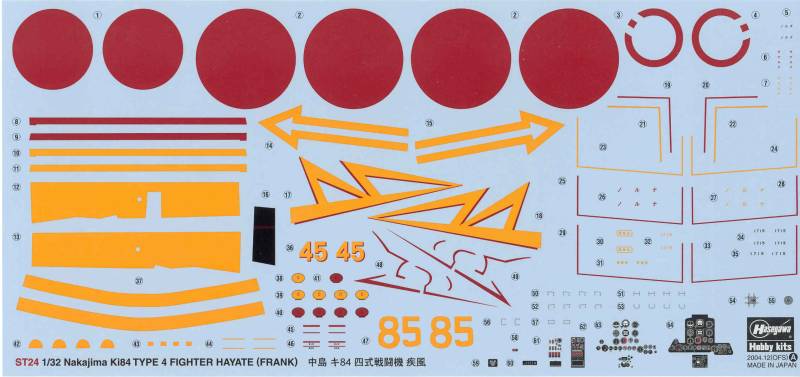
The
instructions
are printed on a long sheet folded to fit the box
and
creating eight panels. The front panel contains a
brief history in
English and Japanese, the second panel has a
symbol chart, parts map
and a paint chart giving the colors used in Gunze
numbers and common
names in English and Japanese. Panels three
through five are the
assembly instructions, the next two panels have
the painting and
marking instructions and the last page has basic
assembly and decal
instructions and the usual health and safety
warnings.
After
Market Goodies
Well,
after telling you how nicely detailed the kit is I turn around
and buy
this stuff, what was I thinking ? Actually this set will take
the
cockpit to the next level. I am a bit undecided on
whether or not
to use the PE panel or the kit part, I generally love the
color panels
that Eduard provides but in this scale the raised detail that
the kit
part provides may be more appropriate but the rest of the
goodies
provided should put some icing on the cake. This is Eduard's
set #
32542. I also decided to go with the Quickboost # 32041 set
that
supplies the exhaust stacks that are cast with open ends to
save me
from drilling out the kit parts. See below
 .
.

Also
available but in my opinion not needed unless you are
seriously AMS
stricken are; Aries # 2084 resin cockpit set, Eduard # 32141
PE landing
flaps, Eduard #32142 PE exterior detail set, Eduard Big Ed set
#
Big3228, Eduard cockpit mask # JX034. There are also decals
available
from Eduard and Eagle Strike.
Conclusions
This
is a really lovely kit that should provide not only an easy
build fit
wise but a nicely detail model right out of the box, highly
recommend
to all but very beginners.
Links
to kit build or reviews
A build can be found here.
References
Japanese Aircraft of the Pacific War
by R.J. Francillon
Back to the 1/32 Scale Japanese
Aircraft page
Updated 7/5/13











 .
.